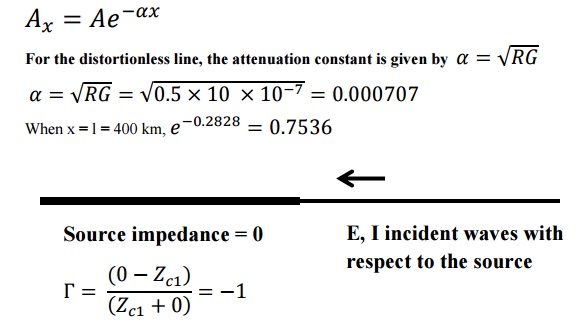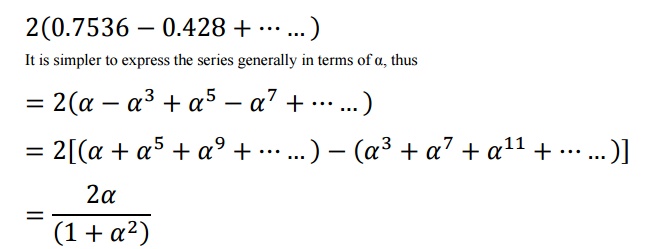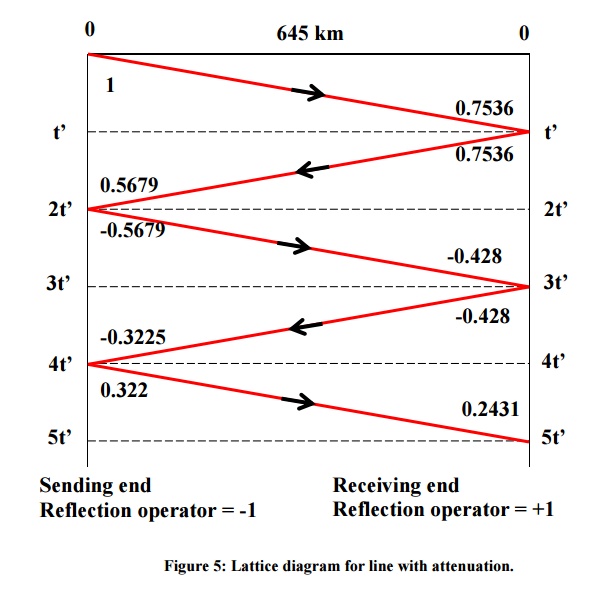Chapter: High Voltage Engineering : Over Voltages in Electrical Power Systems
Bewley Lattice Diagram
Bewley Lattice Diagram
This is a
convenient diagram devised by Bewley, which shows at a glance the position and
direction of motion of every incident, reflected, and transmitted wave on the
system at every instant of time. The diagram overcomes the difficulty of
otherwise keeping track of the multiplicity of successive reflections at the
various junctions.
Consider
a transmission line having a resistance r,
an inductance l, a conductance g and a capacitance c, all per unit length.
If ╬│ is the propagation constant of
the transmission line, and E is the
magnitude of the voltage surge at the sending end, then the magnitude and phase
of the wave as it reaches any section distance x from the sending end is Ex
given by.

where
e - represents the attenuation in
the length of line x
e-j - represents the phase angle change
in the length of line x Therefore,
attenuation
constant of the line in neper/km phase angle constant of the line in rad/km.
It is
also common for an attenuation factor k to be defined corresponding to the
length of a particular line. i.e.
k = e for
a line of length l.
When a
voltage surge of magnitude unity reaches a junction between two sections with
surge impedances Z1 and Z2, then a part is transmitted
and a part is reflected back. In traversing the second line, if the attenuation
factor is k, then on reaching the termination at the end of the second line its
amplitude would be reduced. The lattice diagram may now be constructed as
follows. Set the ends of the lines at intervals equal to the time of transit of
each line. If a suitable time scale is chosen, then the diagonals on the
diagram show the passage of the waves.
┬Ę
All waves travel downhill, because time always
increases.
┬Ę
The position of any wave at any time can be deduced
directly from the diagram.
┬Ę
The total potential at any point, at any instant of
time is the superposition of all the waves which have arrived at that point up
until that instant of time, displaced in position from each other by intervals
equal to the difference in their time of arrival.
┬Ę
The history of the wave is easily traced. It is possible
to find where it came from and just what other waves went into its composition.
┬Ę
Attenuation is included, so that the wave arriving
at the far end of a line corresponds to the value entering multiplied by the
attenuation factor of the line.
This is a diagram which shows at a glance the position and direction of motion of every incident, reflected and transmitted wave on the system at every instant of time. Providing that the system of lines is not too complex the difficulty of keeping track of the multiplicity of successive reflections is simplified. As a first example, consider the case of an open-circuited line having the following parameters:

Assume also that RC = GL; this condition (Heaviside condition) results in a distortionless line and the voltage and current waves remain of similar shape in spite of attenuation. In such a line, it can be shown that if a wave of amplitude A at any point of the line, the amplitude Ax at some point distant x from the original point is

At the
receiving end, the line is open-circuited and ąā = +1.
Let us
denote the initial value of the voltage at the sending (generating) end by 1
p.u., then, we will have the following
sequence of events as far as the reflected wave is concerned. Let tŌĆÖ be the time taken to make one tour of the line,
i.e. 400/3├Ś105 zero time, a wave of amplitude 1 starts from G. At time tŌĆÖ, a
wave of amplitude 0.7536 reaches the
open end and a reflected wave of amplitude 0.7536 commences the return journey.
At time 2tŌĆÖ, this reflected wave is
attenuated to 0.5679 and has reached G. Here it is reflected to -0.5679 and after a time 3tŌĆÖ it reaches the open end
attenuated to -0.428. It is then reflected and reaches G after a time 4tŌĆÖ with an amplitude of
-0.3225. It is then reflected with change of sign thus starting with an amplitude of 0.3225 and so
on. The Bewley lattice diagram is a space-time
diagram with space measured horizontally and time vertically and the
lattice of the above example is shown in
Figure 5. The final voltage at the receiving end is the sum to infinity of
all such increments. Thus, in the above
example, it is:

When the
given values are substituted in the above expression its value is 0.9613.
Thus,
even when open-circuited, such a line gives a far end voltage less than the
sending end voltage, the reason being
that the shunt conductance current produces a drop in the series resistance.


Related Topics